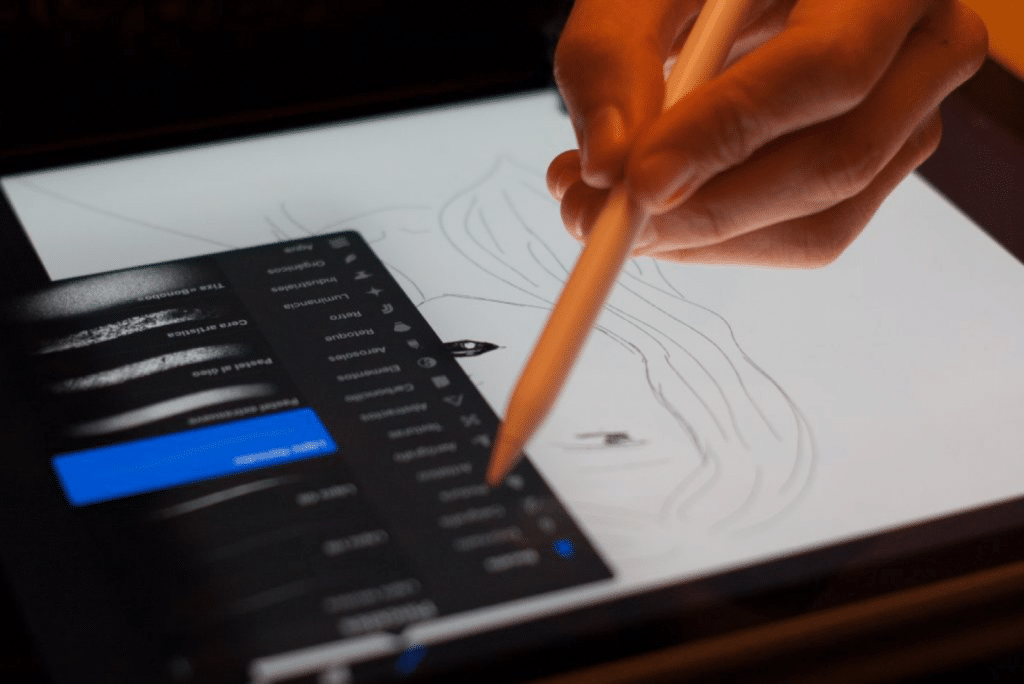The Future of Modelling – Can Virtual Models Really Replace Real Faces?
In the digital age that we live in, the virtual world is starting to grow in popularity. The lines between real-life models and computer-generated “virtual” models are becoming very blurred. Top brands are using fictional models to wear their designs and share to millions of followers on Instagram.
We’ve all witnessed how social media platforms portray a very edited version of reality. Influencers infamously only post the highlights of their life, while the fashion industry regularly Photoshops physiques to unrealistic standards. But is the rise of CGI taking this concept to the next level? Will models eventually be replaced?

What is a Virtual Model?
A virtual model is a digital image that is created by a team of people using a computer. The model does not exist in real life, just on a computer or phone screen. A lot of people buy into their presence on the Internet. Many have thousands of followers.
With this amount of exposure, designers and fashion brands want in on the action. Brands have started to hire them to digitally wear their designs. They contact the digital team of people behind the virtual model and ask for a collaboration – for a fee, of course.
Meet the Virtual Models
As with everything, there are a few frontrunners that lead the virtual world with their celebrity status. A few have become very popular with an international audience who love them for their seemingly cute personalities, perfect hair, incredible dress sense and immaculate complexions. Their creators are looking to earn money by working with brands to market products.
Lil Miquela
Created in 2016, Miquela is very obviously digitalized – but her 1.1M followers don’t care! Her single, ‘Not Mine’, went viral on Spotify and she is also a great supporter of social causes.
She’s so popular that Prada collaborated with the brains behind Miquela to design a sticker pack of images and GIFs to be used on Instagram stories. She is (supposedly) a 19-year-old Los Angeles girl with a fresh-faced, girl-next-door look.
Shudu
Recognised as the first digital supermodel, Shudu has an impressive 105K followers on her Instagram account. Her striking, mesmerising beauty had people under a spell right from the start. In fact, no one knew she was an avatar until much later!
Her creator hopes to tackle diversity issues within the fashion industry, whilst also putting a few of his favourite brands in the spotlight.
Lightning
Her career began on the Japanese video game Final Fantasy. She joined the fashion world when Nicolas Ghesquiere, Louis Vuitton creative director, took an interest in her bubblegum-pink hair. She wore Louis Vuitton designs in three videos and his Spring/Summer 2016 collection was inspired by video games.
He’s not the only designer creating for the virtual world, with Marc Jacobs designing stage outfits for Japanese virtual singer Hatsune Miku.
Is Creating Perfection Damaging for Society?
It will likely become incredibly difficult soon to distinguish between the real world and the fake, particularly with the continued improvements to the realism of virtual models. Fenty Beauty, the make-up brand owned by Rihanna, posted an image on social media of a model wearing lipstick; no one suspected the beauty was, in fact, not human.
The photo went viral and in two months, Shudu (see above) had more than 90,000 Instagram followers. The social media mirage was adored, with the creator (British photographer Cameron-James Wilson) replying to messages from fans to further fuel the false illusion.
He eventually admitted that Shudu is an artistic creation due to his anxiety, and stated he felt uncomfortable lying to fans.
Is There Any Such Thing as “The Perfect Model”?
Could this false illusion of perfection be creating a world in which individuals compare themselves to the “perfect model”? We already have activists campaigning against a false representation of beauty standards in the fashion industry; isn’t this just adding to that?
Humans are beautifully flawed, which we should celebrate and showcase rather than remove with a touch of a button. There is already a place for illustrations and graphics that are wonderfully creative. Do we need to replace real models?
Furthermore, will it have a negative impact on how the younger generation feel about their looks and bodies?

The Future of Modelling
Will a degree in computer science or animation soon be more relevant than a beautiful face or impressive physique? Living in the digital age, where many people are transfixed to their phones and laptops, one could argue that reality is already taking a back seat. It is as though the fashion industry feels it has to react to the current trend in order to avoid getting left behind.
However, it could just be a fad, an extension of the gaming world. It’s fun, playful and new, causing plenty of intrigue.
How Would it Work?
Yet don’t we need models that we can relate to? It’s difficult to imagine virtual images replacing supermodels at New York, Paris and Milan Fashion Week. The excitement, thrill and electric atmosphere can’t be recreated online by an animation team. Fashion lovers want to see the texture, movement and shape of a fabric in real life – not on a computer screen.
The same goes for photoshoots and magazines. Wouldn’t the publication be more like a comic if each image were digitalised? Yes, as a species we crave fantasy and illusion, but only to a certain degree.
It’s the same within music and photography. Everyone is excited about the newest release. The tape replaced the record and the digital camera made analogue redundant.
However, the younger generation is getting nostalgic for the past. They crave the sound of the old records and the process of developing a film. Yes, the digital age is great – but we need people, too.
What Do You Think?
What do you think about virtual modelling – do you think it will replace real-life models?